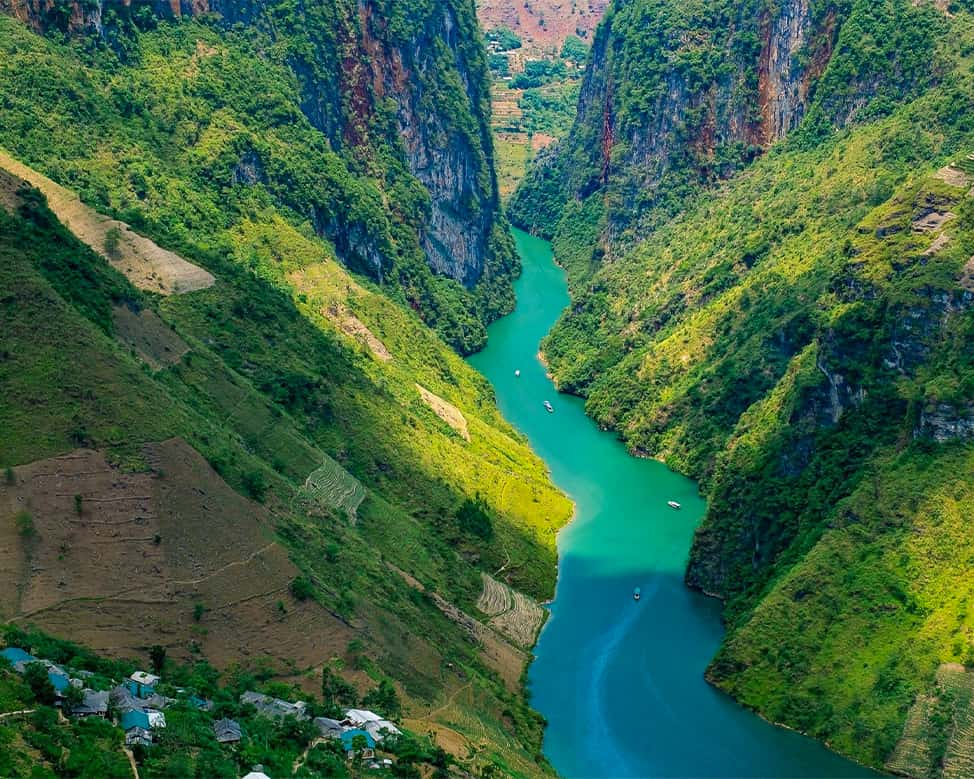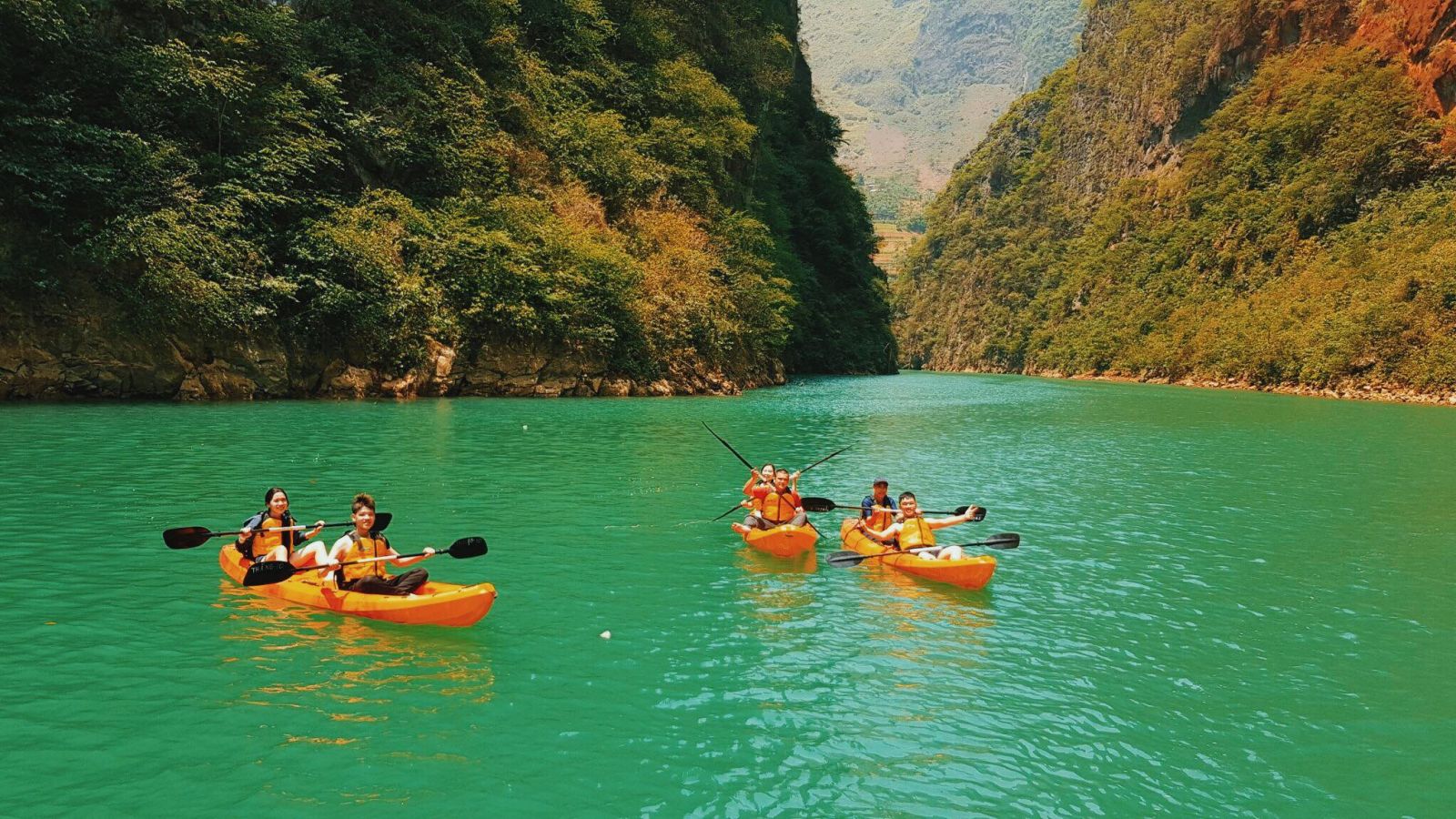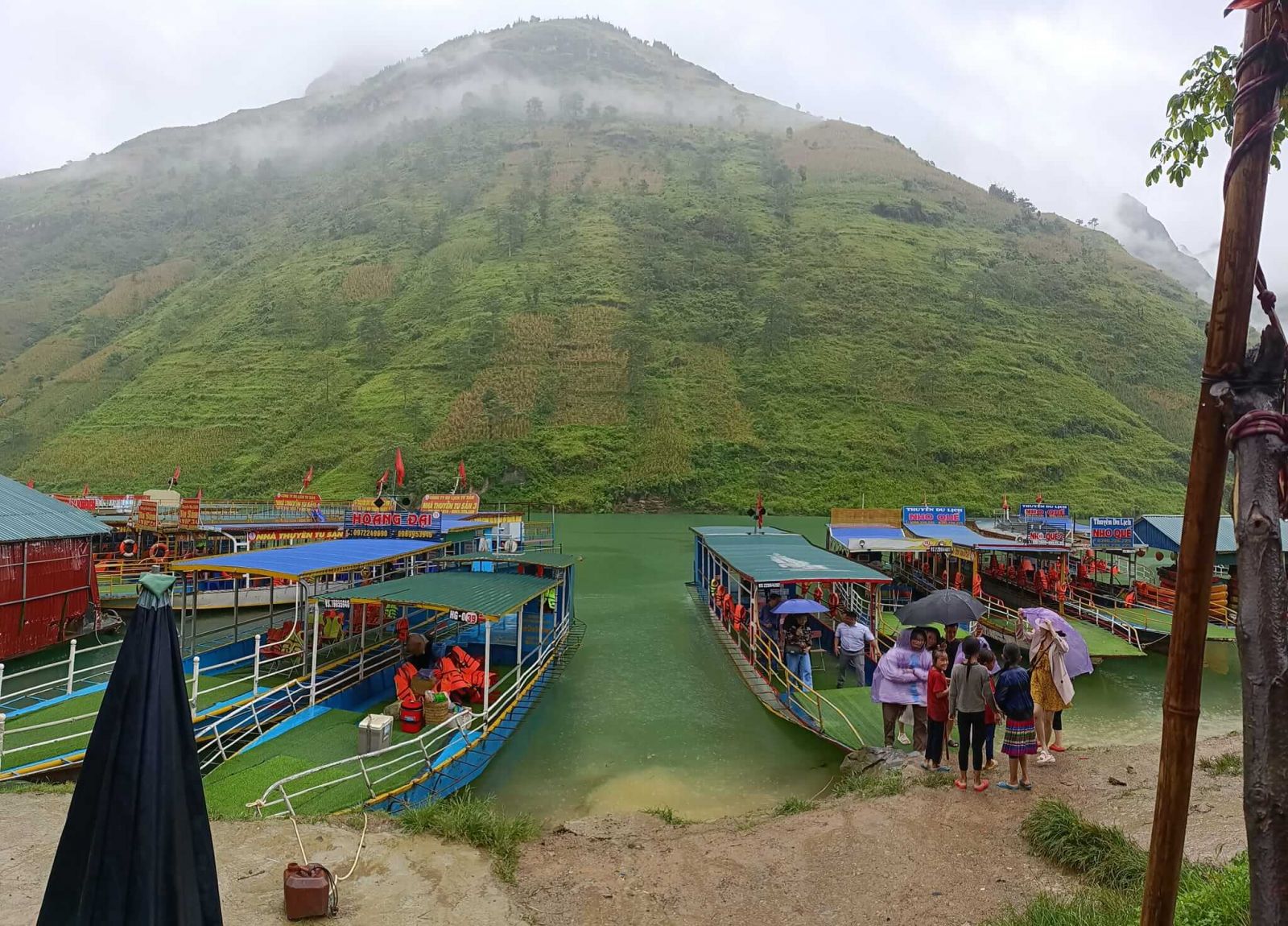Nho Que River Ha Giang
Together with the perilous Ma Pi Leng Pass, the Nho Que River has become a must-visit and stands as one of the symbols of Ha Giang. Nho Que is one of the most beautiful rivers in the rocky plateau of Ha Giang. When viewed from above, the Nho Que River appears like a sparkling green thread, weaving its way through the northeastern mountainous forests. The Nho Que River flows calmly year-round amidst rocky cliffs, forming a picturesque border between the Ma Pi Leng Pass and the Sam Pun Road. If you love nature and adventure, Nho Que River is the perfect destination.
Where is Nho Que River?
The Nho Que River originates from the Nghiem Son Mountains (Yunnan, China), at an elevation of 1,800 meters. It flows in a northwest to southeast direction, through treacherous and wild mountainous terrain, eventually pouring into the Lung Cu commune (Dong Van, Ha Giang) in Vietnam. The river continues its course through the Tu San mountain pass, along the Ma Pi Leng, and upon reaching Meo Vac, it splits into two branches, flowing into the territory of Cao Bang before finally merging with the Gam River at the Na Mat junction.
For a view of the Nho Que River from above, many people choose to stop at a section on the Ma Pi Leng Pass near Tu San Abyss, despite the challenging 20-kilometer road. When in Ha Giang, you don’t just go to the Nho Que River without visiting the Ma Pi Leng Pass, because to be able to get to the Nho Que River you have to first conquer the pass. The river and the pass are the perfect duo, your Ha Giang loop tour wouldn’t be the same without one or the other.

Nho Que River boat rides and tickets
If you’ve already stopped on the Ma Pi Leng Pass to admire the Nho Que River from up high, you’re gonna want to touch the emerald green water with your own hands. You have three options: motorboats, paddle boats or kayaks.
Motorboats: The price for a motorboat trip ranges from 100,000 VND to 150,000 VND per person. This is the most popular choice to admire the Nho Que River, especially for groups. You can freely enjoy the scenery and take as many photos as you want without putting in any effort. If you are traveling alone or in a smaller group, you can join other people.
Paddle boats: The boats can be wooden or iron, with prices ranging from 100,000 VND to 150,000 VND per person. You can paddle the boat yourself or hire someone to do it for you. This choice is great if you want privacy and more time to sightsee.
Kayaking: The rental price for kayaking on the Nho Que River is 50,000 VND per person. This is a must-try for people who enjoy exploration and a bit of cardio. You can paddle the kayak yourself, stop to admire whenever you want, and take as many photos as you like.

How to get to Nho Que boat dock
There are two docks to choose from: one in Xin Cai and one in Pai Lung.
If you choose to get off at the Xin Cai boat dock, from Dong Van town, you will need to head towards the Ma Pi Leng Pass. Then continue towards the Meo Vac district. At the end of the pass, there is a sign indicating a left turn to Xin Cai. Keep going in the direction of Xin Cai for an additional 5-7 km, and you will reach the boat dock.
If you choose to get off at the Pai Lung boat dock, from Dong Van town, you will need to travel 4 km to the junction at the pine hill. From there, turn left towards Tà Làng, and keep straight until you arrive at the Nho Que River boat dock. Do be careful because this route is quite steep.

Tips for visiting Nho Que River
To reach the Nho Que River, you will need to get through the Ma Pi Leng Pass. This is one of the four most dangerous and challenging mountain passes in Vietnam. So be careful and make sure you are or you’re traveling with someone with fair driving experience. If you’re not that confident with your skills, you can get an easy rider, or buy a ticket combo that includes the ride to the dock. You can never be too careful.
We recommend exploring the river in the late afternoon or early in the morning, because it's the most beautiful. Wear the life jacket, and be safe when you get to the edge of the boat.
Dong Van is colder than other districts in Ha Giang, so if you plan to explore the Nho Que River, check the weather forecast in advance and bring appropriate clothing, especially if you’re planning to visit the Nho Que River because it might be even colder and windier.
Currently, the Nho Que River remains one of the destinations that has not been heavily industrialized yet. Therefore, whether traveling on the Nho Que River (or other tourist spots in Ha Giang), remember to be a decent human being and not litter, to help preserve the natural landscape.




.jpg)


